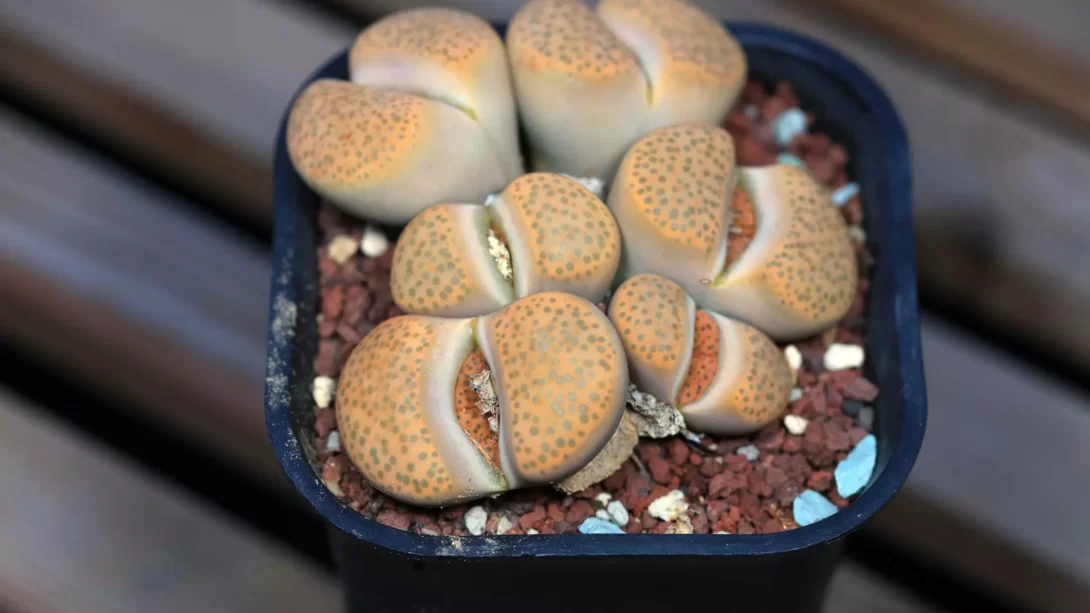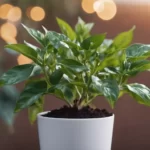Lithops, also known as ‘living stones’, are fascinating succulents that have captivated plant enthusiasts with their unique appearance and minimalistic care requirements. However, their watering needs are different from most other succulents, often leading to confusion among caretakers. This article aims to clarify when and how to water Lithops effectively.
Lithops
Native to the dry regions of southern Africa, Lithops have evolved to thrive in arid conditions with infrequent rainfall. Their stone-like appearance is an adaptation to blend in with the surrounding rocks, a natural defense against grazing animals. Unlike typical succulents, Lithops have a very specific and unique growth cycle, which dictates their watering needs.
The Watering Cycle of Lithops
The lifecycle of Lithops is closely tied to their watering schedule. Understanding their growth stages is crucial:
- Spring (Reawakening): As temperatures rise, Lithops begin to come out of dormancy. This is usually when the first watering of the year should occur, but only after the plant shows signs of growth.
- Summer (Growth Period): Lithops actively grow during the summer. Watering during this period should be moderate but consistent, allowing the soil to dry out completely between waterings.
- Fall (Flowering and New Leaf Emergence): Many Lithops bloom in the fall, and new leaf pairs start to form. Water sparingly during this period, reducing frequency as temperatures drop.
- Winter (Dormancy): During winter, Lithops enter a dormancy phase. Watering should be stopped completely to mimic their natural dry season in the wild.
Signs of Watering Needs in Lithops
Observing your Lithops can provide vital clues about their watering needs:
- Need for Water: Lithops needing water may have slightly wrinkled or shrunken leaves. They might also appear duller in color.
- Overwatering Signs: Overwatered Lithops often become translucent, yellow, or burst. They may also show signs of root rot.
Watering Techniques for Lithops
Proper watering technique is essential to maintain healthy Lithops. Here’s how to do it right:
- Soak-and-Dry Method: This method involves thoroughly watering the soil until it’s completely soaked and then allowing it to dry out entirely before the next watering. This mimics the natural rainfall patterns that Lithops experience in their native habitat.
- Type of Water: Use room temperature water. Rainwater or distilled water is preferable as it is closest to the natural water Lithops would receive. Tap water can sometimes contain minerals that might accumulate in the soil over time.
- Avoiding Watering Mistakes: Never water Lithops lightly or frequently, as this can lead to root rot. Ensure water penetrates the soil deeply each time you water.
Adjusting Watering Based on Environmental Factors
Lithops care, particularly watering, needs to be adjusted based on several environmental factors:
- Climate and Season: In a humid climate, Lithops may need less frequent watering compared to a dry climate. Additionally, in winter, when most Lithops go dormant, they should not be watered at all.
- Indoor vs. Outdoor Growth: Lithops kept indoors, where the environment is more controlled, may have different watering needs than those grown outdoors. Indoor Lithops generally require less frequent watering.
- Soil and Drainage: Use a well-draining soil mix specifically designed for succulents and cacti. Good drainage is crucial to prevent water from pooling around the roots.
Common Issues Related to Watering
Improper watering can lead to several issues in Lithops:
- Root Rot: Caused by overwatering, root rot is a common issue. If you suspect root rot, it may be necessary to repot the plant into fresh, dry soil and adjust your watering schedule.
- Shriveling: While some wrinkling is normal during the new leaf emergence phase, excessive shriveling might indicate underwatering.
- Splitting or Bursting: This can occur if Lithops are overwatered or watered out of schedule, causing them to absorb more water than they can hold.
Conclusion
Caring for Lithops, particularly when it comes to watering, requires a keen eye and understanding of their unique lifecycle. Remembering that these ‘living stones’ have evolved to survive in harsh, arid climates is key to providing them with the right care. By following the soak-and-dry method, adjusting to environmental factors, and being aware of the common signs of watering issues, you can ensure the health and longevity of your Lithops.
Observation is crucial: watch how your Lithops respond to watering and adjust as necessary. Each plant may have slightly different needs based on its specific environment and condition. Being adaptable in your care approach will help you become more attuned to the needs of these fascinating plants.
In conclusion, successfully growing Lithops can be a rewarding experience for any plant enthusiast. These distinctive succulents not only add an intriguing aesthetic to your collection but also offer a window into the adaptability and resilience of plants. With the right watering regimen and care, your Lithops can thrive, showcasing their unique beauty and reminding us of the wonders of the natural world.



